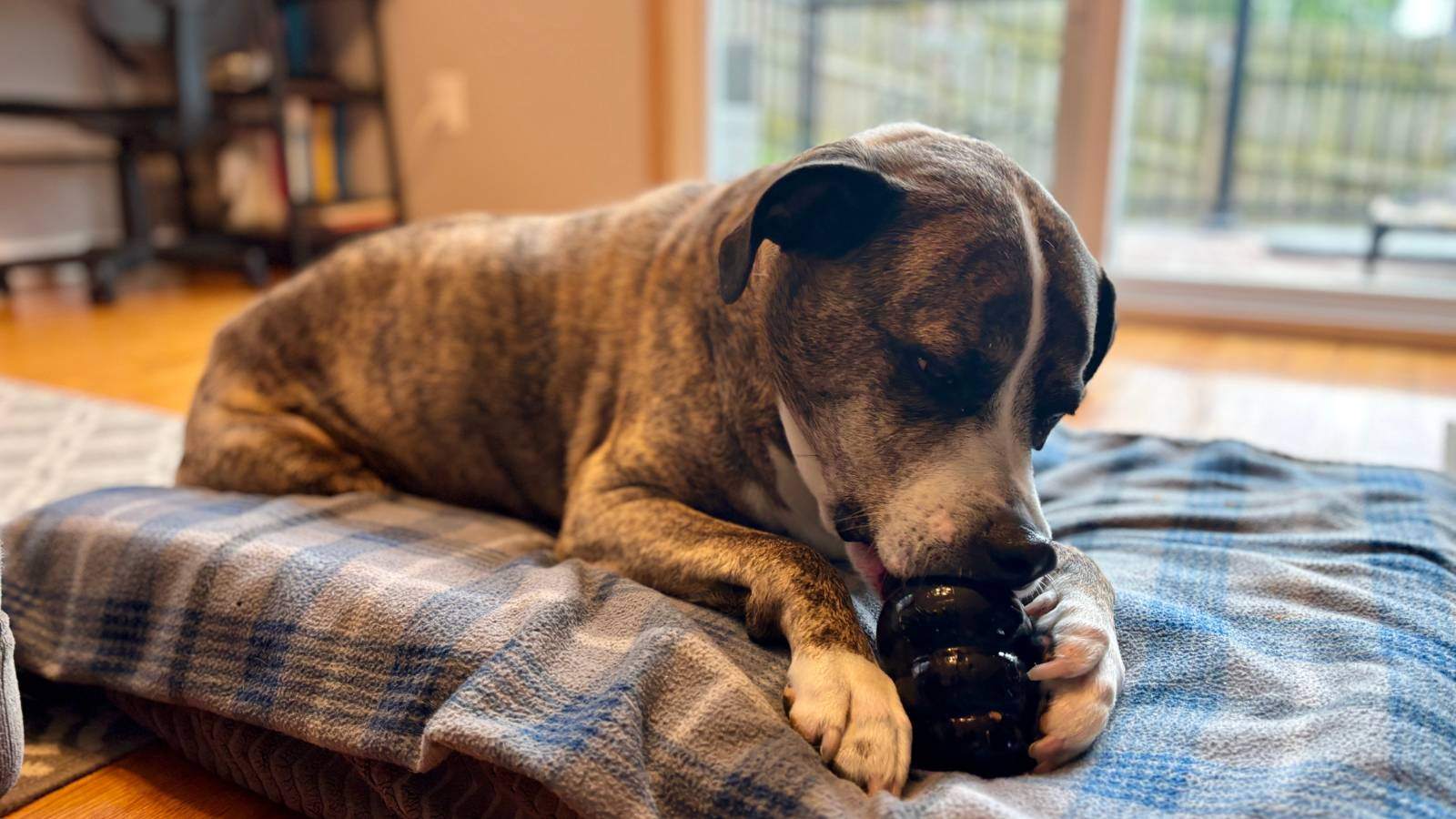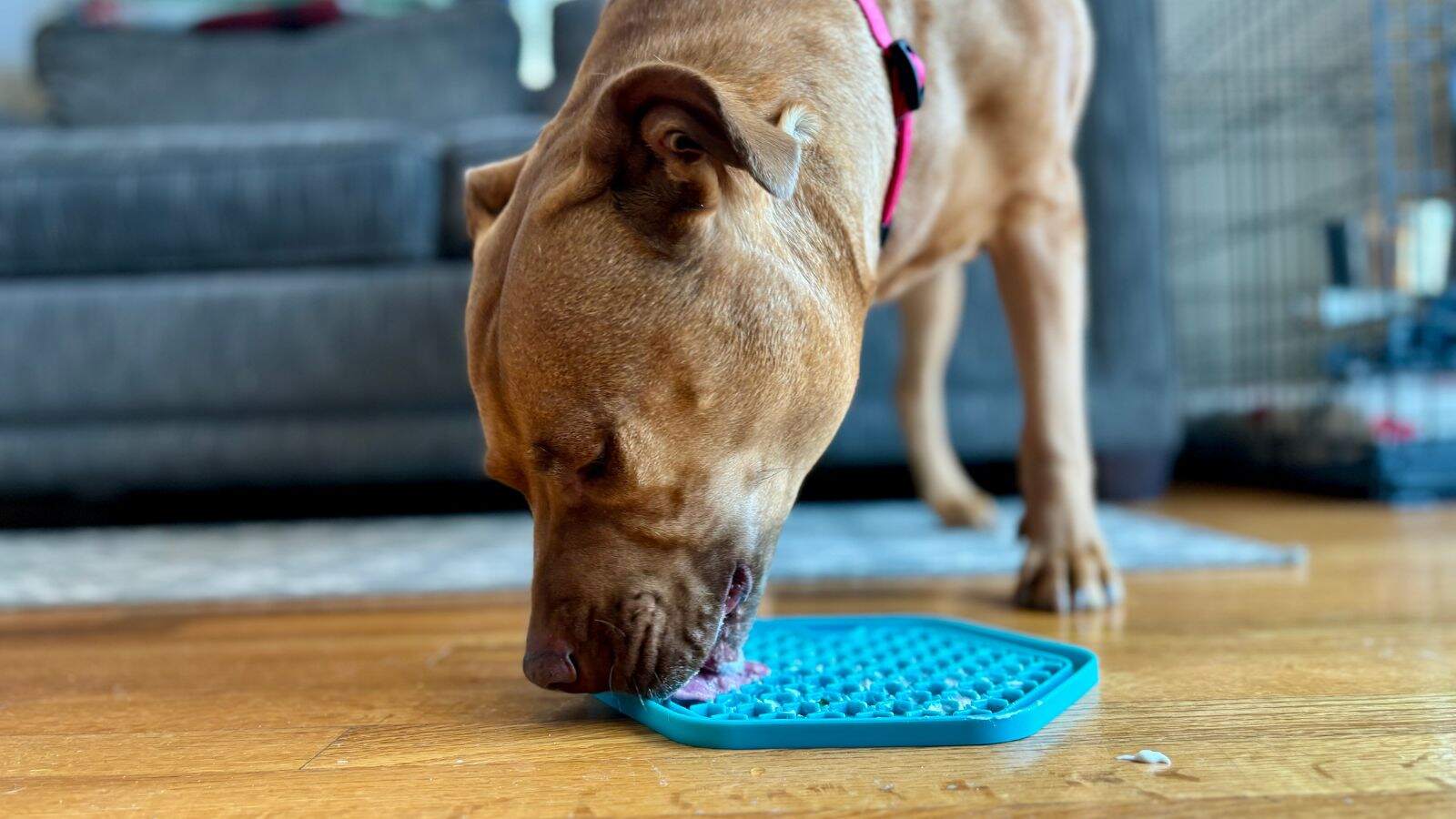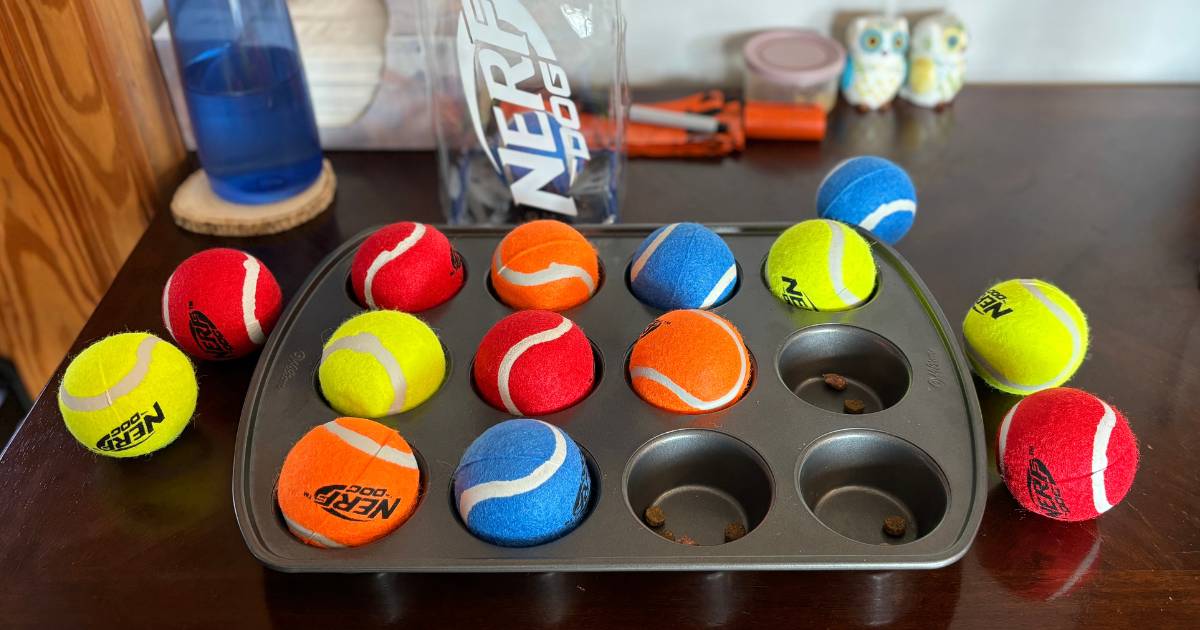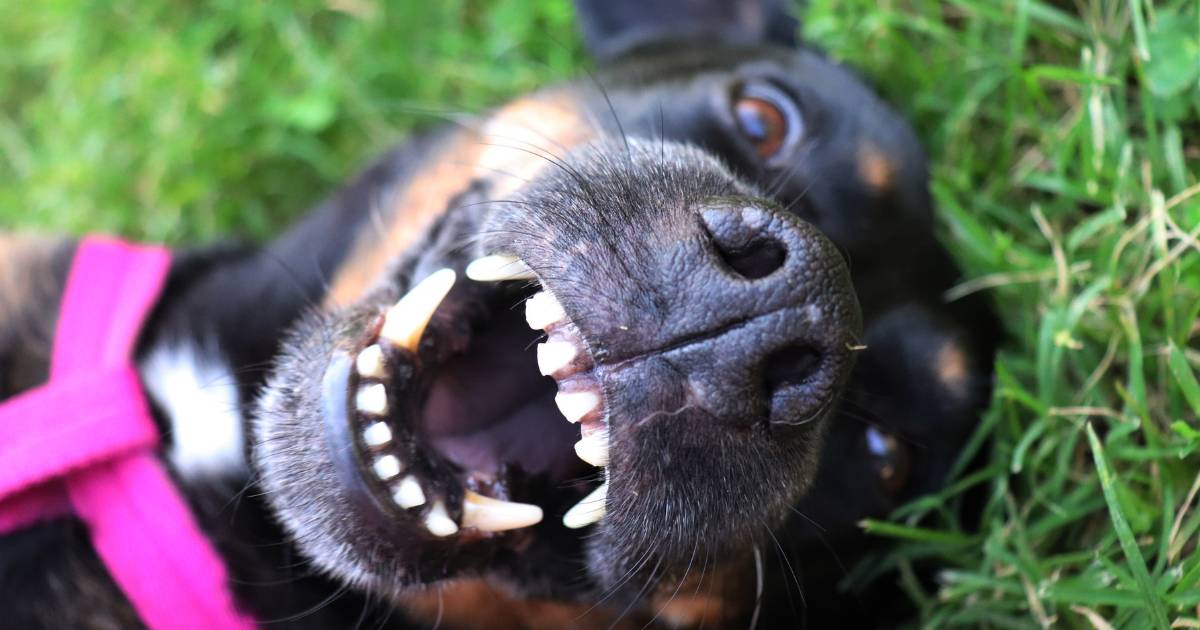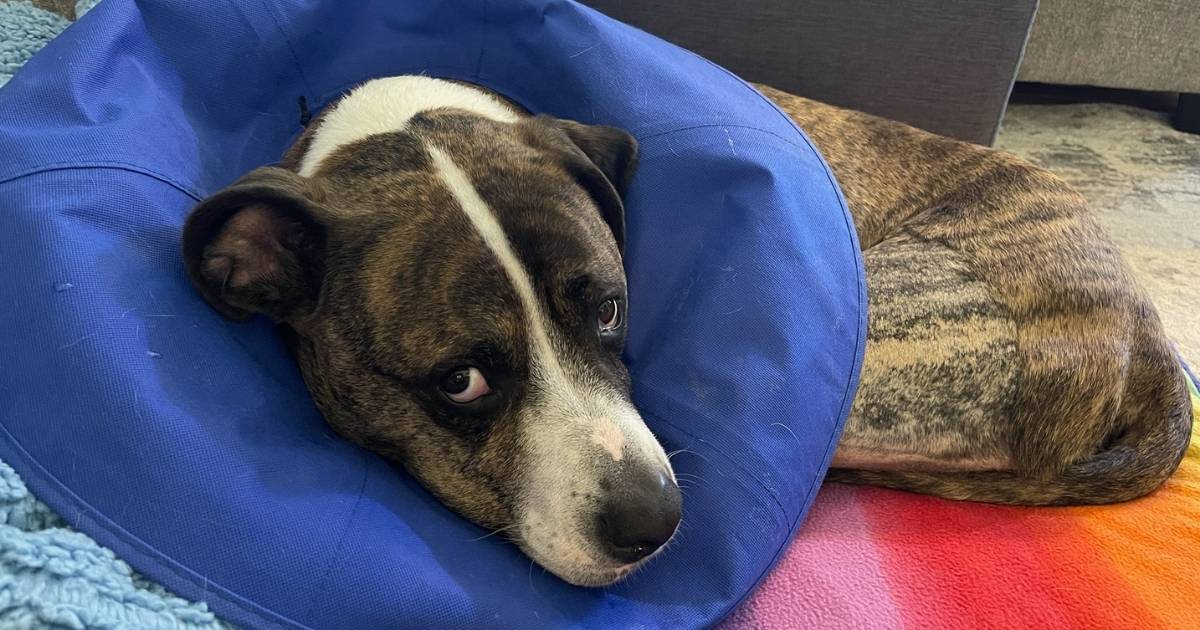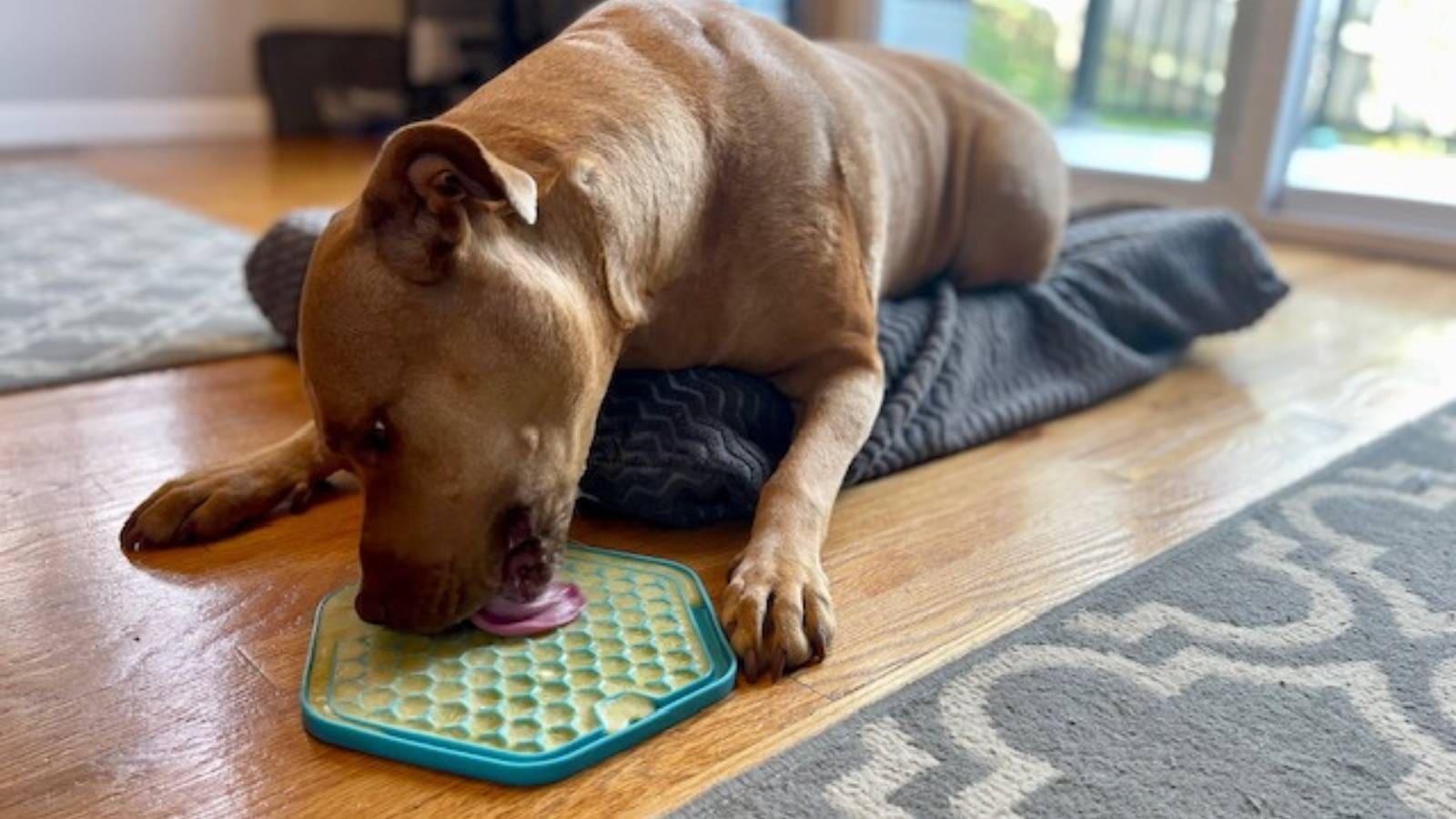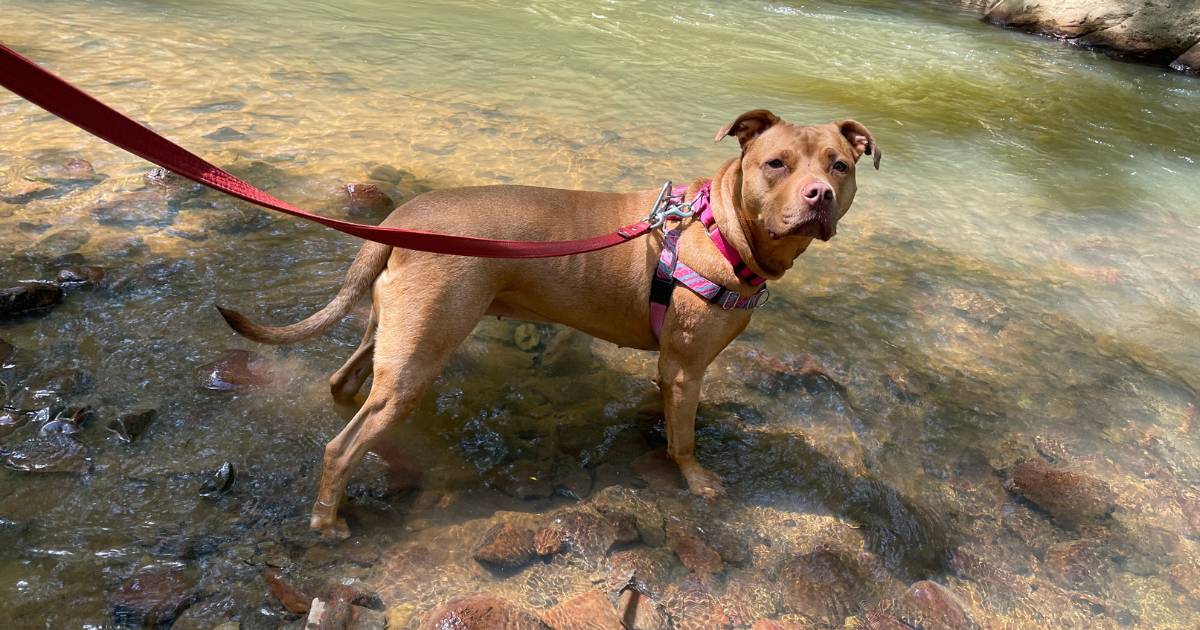For the sixth installment of our DIY agility series, we discuss creating a DIY dog agility platform (or pause table). We use the command “up” for our dogs to use this.
This article will walk you through the most common issues and fixes, as well as how to create or buy different pieces of equipment. Whether you’re practicing agility inside or outside, enjoy building your own, or just want to buy equipment, we have a solution for everyone.
In case you missed the general article, here’s the link! Make sure to check our blog for additional how-to articles as we post the most common obstacles and equipment for agility training!
Getting started
Before we get started with our guide on making your own DIY dog agility platform, let’s review some information that’s important to revisit.
If at all possible, try to have your obstacle on a rug or carpet instead of slick vinyl or tile. Outside is less of an issue, but try to stay away from slick surfaces, uneven ground, or any object that would be unpleasant if you run into it.
As always, please proceed carefully before starting any physical activity with your dog. If you are unsure, consult an expert, trainer, or vet. We are providing this guide for informational purposes, based on our own experiences and what works for most pups.
Things to watch out for

If your dog is visibly sore from performing any activity, give him rest for a few days and evaluate how he or she is doing at that point. The primary goal of beginner agility is to have fun, and we’re trying to avoid any negative associations with the activity.
If your dog has no real activity level at the moment, we’d recommend not doing any of the higher-impact activities for a while until he or she is used to being more active. Imagine how your muscles and joints would feel if you haven’t run in years and tried to do hurdles. It’s the same for your dog.
A DIY dog agility platform might be higher-impact on your dog’s joints, so we recommend starting with lower-impact options first. These would be weaves, tunnels, and dog walks (ramps). If you’re set on doing this first, make the height low and gradually work your way up. Remember to take it slow and don’t force your dog to jump if they’re scared or uncertain.
Again, we recommend consulting with an expert (vet, trainer, or other professional) if you’re not sure of your dog’s ability to handle any new activity.
Common issues and fixes
Not wanting to jump on/off the table

This command is typically easy to learn, but there can be a variety of reasons why your dog doesn’t want to jump onto the platform.
First, your DIY dog agility platform could be too high. Even if you think your dog is fine, try using a lower obstacle first and see if they are more willing to jump onto it. If this is the case, you can keep increasing the height after they aren’t as scared to jump onto the platform or give them a smaller step to use before getting onto the platform. Remember to take it slow and let your dog get used to the height before trying to increase it.
Second, landing on the platform could be an issue. If your platform is too small or is slippery for their paws, your pup will have issues with trying to regain their footing. If the size is too small, the best options are to either return or modify your design. If your DIY dog agility platform is too slick, you can utilize any of a variety of options to add traction. You can repurpose anti-slide products, such as the textured material seen on some steps, to prevent your dog from sliding on their pause table. This is one of the great parts about making your own!
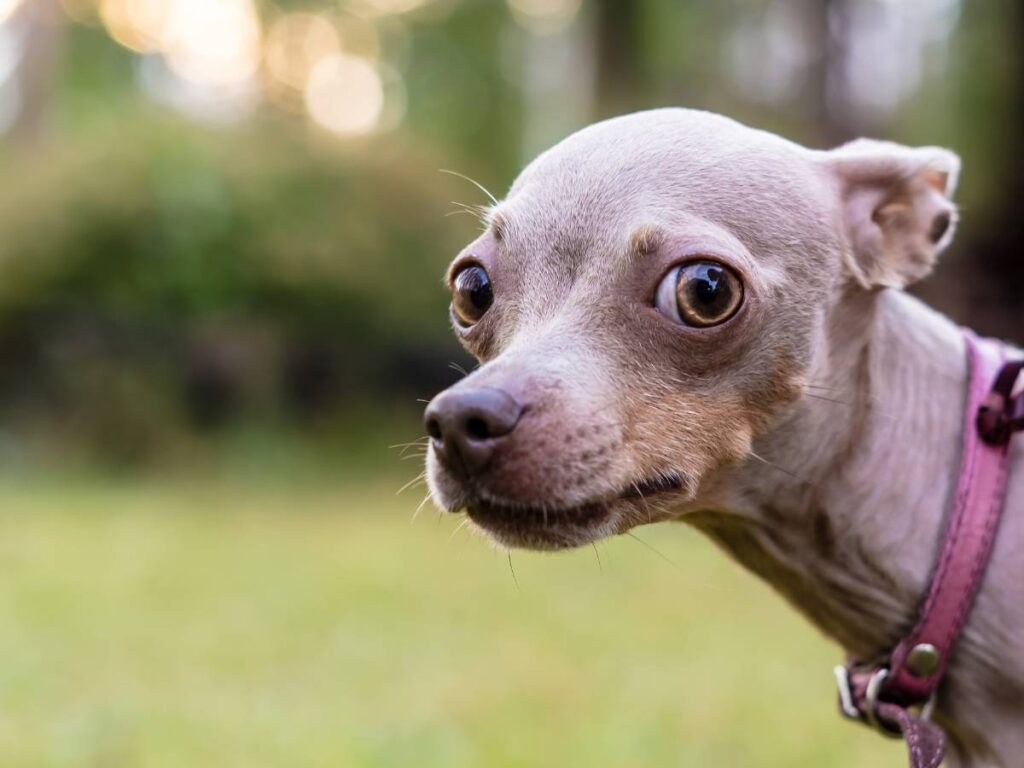
Third, your pup could be scared of jumping off of the platform. Prim tends to have issues with this. She is very willing to jump onto pretty much anything (even a 2-inch window sill one time, which is ridiculous considering she weighs 75 lbs!), but she doesn’t think through the exit.
Fortunately, this is easy to address. If your pup doesn’t want to jump off a place that’s too high, give them a step that won’t slide or an alternate way to dismount (for example, from the platform onto an ottoman and then the ground). If you build your own, you can plan this as part of the design. And make sure the spot they are jumping down to has adequate traction!
Equipment options
Outside
Pre-made
The options for pre-made pause tables tend to be more expensive than you would expect. For example, this one is one of the best we could find from Amazon. Some other options for a pause table can be an elevated dog bed, grooming station, or anything else that’s solidly built and off the ground (for example, an ottoman or entryway bench).
Temporary

If you have a yard or access to a park, there are a multitude of options here. For example, we use both our steps and our deck as a pause table consistently. If you don’t have any surfaces like this, anything that is 12-18 inches off the ground is perfect for a medium to large dog.
If you have access to a park, the options are abundant. If you are having your pup jump onto the surfaces on a playground, cover or be careful with the grated sections so you don’t end up with a toenail stuck.
Building your own DIY dog agility platform
This is a little different than our typical build-your-own obstacles, primarily due to the need for your obstacle to be built solidly. We combine this elevated dog bed with a ramp to make our preferred agility dog walk, too!
If you have a smaller dog, you can scale this down as needed. For example, an 80 lb dog will have different abilities and height requirements than a 15 lb dog. We describe this design as if you have a 60-80 lb dog since that’s what both of ours are.
To construct the pause table, here is a list of the supplies you’ll need:
- 1 post, 3”x3”x6’ ( we recommend treated if you intend to use it outside)
- 1 piece of plywood, 2’x3’x0.5” (the material doesn’t matter as much, but should be sanded to avoid splinters)
- 3 pieces of lumber, 1”x3”x8’
- Screws (<50), longer than 1”
If you don’t have these tools, you may need to acquire or borrow some:
- Drill driver
- Drill bits
- Saw (to cut posts and lumber)
First, cut all the wood you’ll need for the project to the following sizes:
- 23” x 36” plywood
- (4) 15” 3x3s
- (2) 23” 1x3s
- (1) 24.5” 1×3
- (4) 36” 1x3s
- (2) pieces of scraps that are less than 31”
Now that the cutting is out of the way, start by making the main part of the DIY dog agility platform. Grab the (4) 36” 1x3s, (4) 15” 3x3s, and (1) 24.5” 1×3. Attach the 3x3s to each end of (2) 36” 1x3s. Stand the structures on the legs and attach the 24.5” board on the short side on the ground. This will help hold everything upright while working. Finally, attach the remaining 2 boards on the ground to help hold everything together. The product should look like the next image.
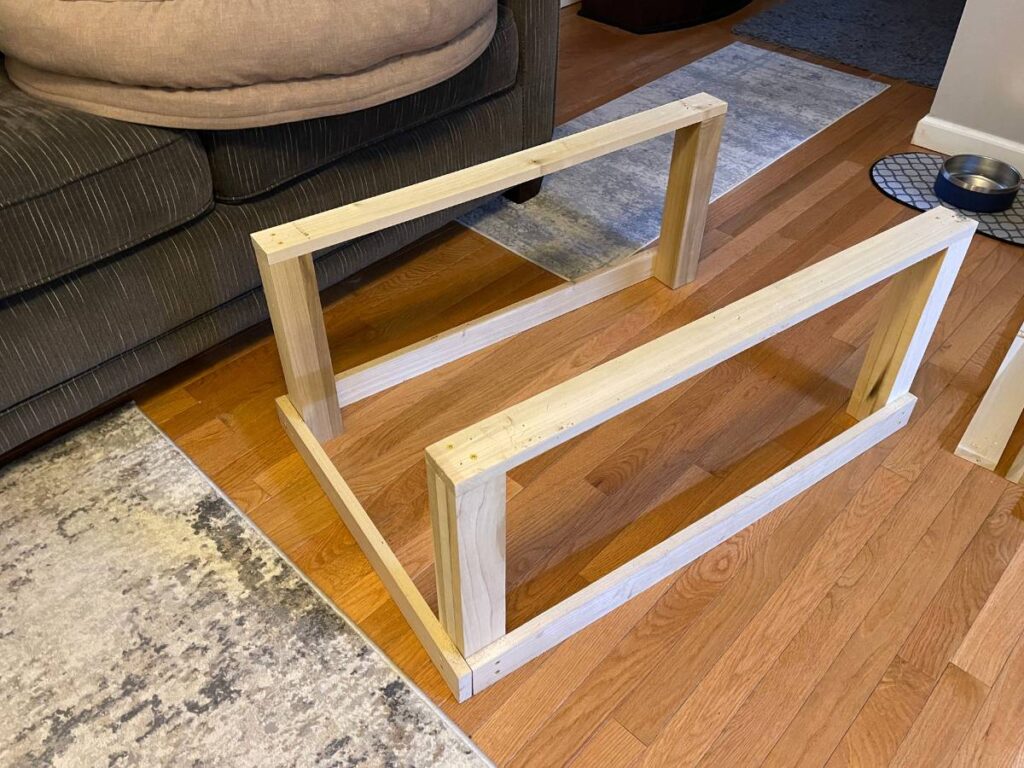
Next, we need to make the supports for the plywood. Grab (2) 23” 1x3s and the scrap wood. The scrap wood can be in as many pieces as you need to and doesn’t have to cover the entire length. First, grab the 23” boards and place each corner on top of the 3x3s & 1x3s we installed before. Screw these in and then do the same to fill in the gap on top of the 1x3s on top of the 3x3s. This will give us a nice flat base to sit the plywood on.
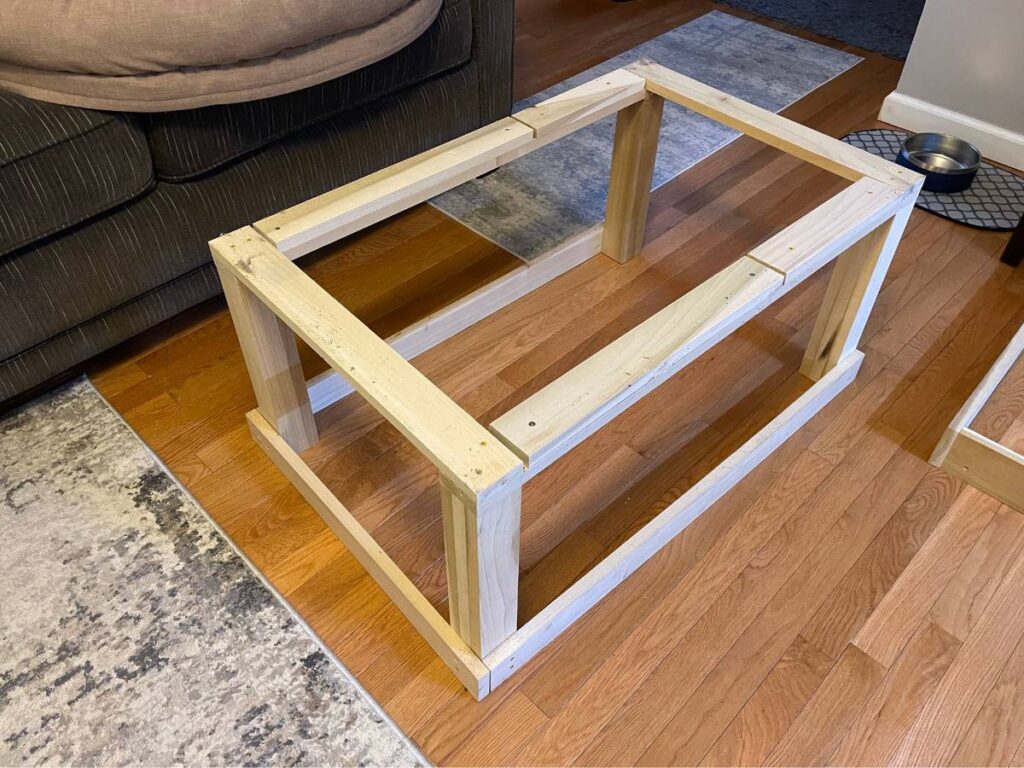
Finally, place the plywood on top of the rectangle we made and screw it in.
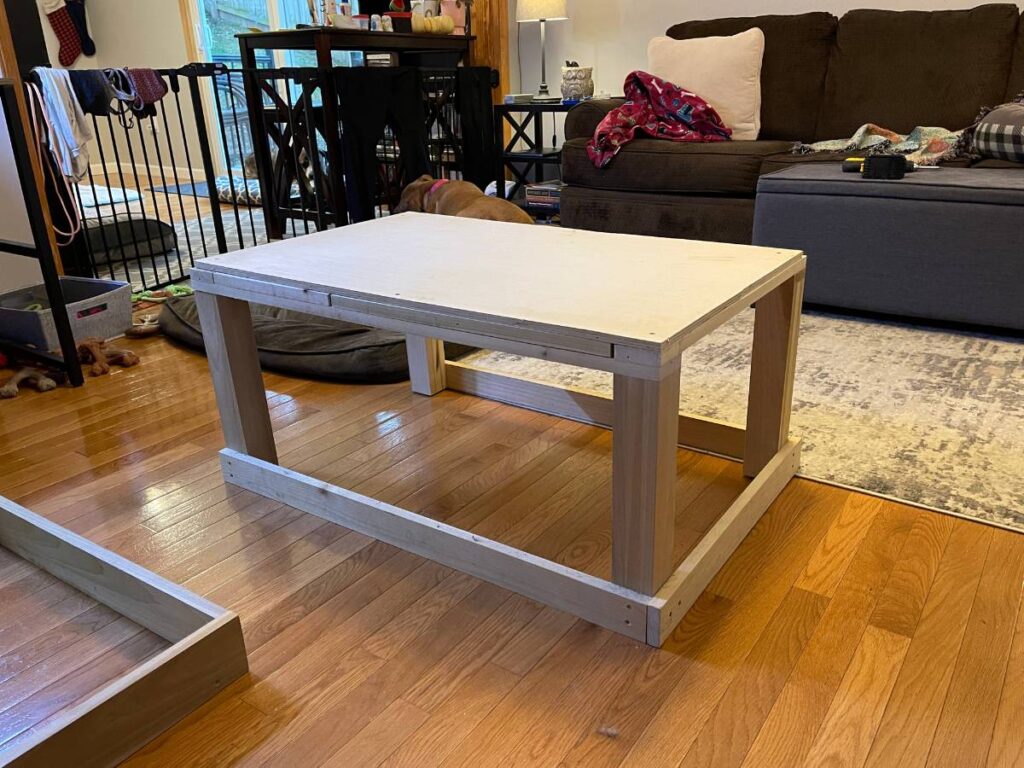
And it’s done! If you want, your DIY dog agility platform can double as a DIY dog bed holder. We added some more 1x3s to frame the platform and prevent the bed from slipping. Our pups love looking out the window from it when it’s not being used for agility.

Inside options
Pre-made
The same options apply for a pre-made inside pause table as an outside one. Even the inside options tend to be more costly than you’d expect.
We prefer to use the temporary options or build our own DIY dog agility platform for inside since it allows us to not have to find a place to store something else and works just as well.
Temporary

We use this obstacle for almost all of our inside agility. We use our ottoman and place it somewhere it won’t slide (i.e. on a rug or carpet). It’s extremely convenient and is plenty large enough for both our pups to turn around if needed.
If you don’t have an ottoman, you can use a sofa or a bed, if it’s the appropriate height. Just be sure to have your pup jump from or land on a non-slip surface. It makes a huge difference to their confidence.
Building your own DIY dog agility platform
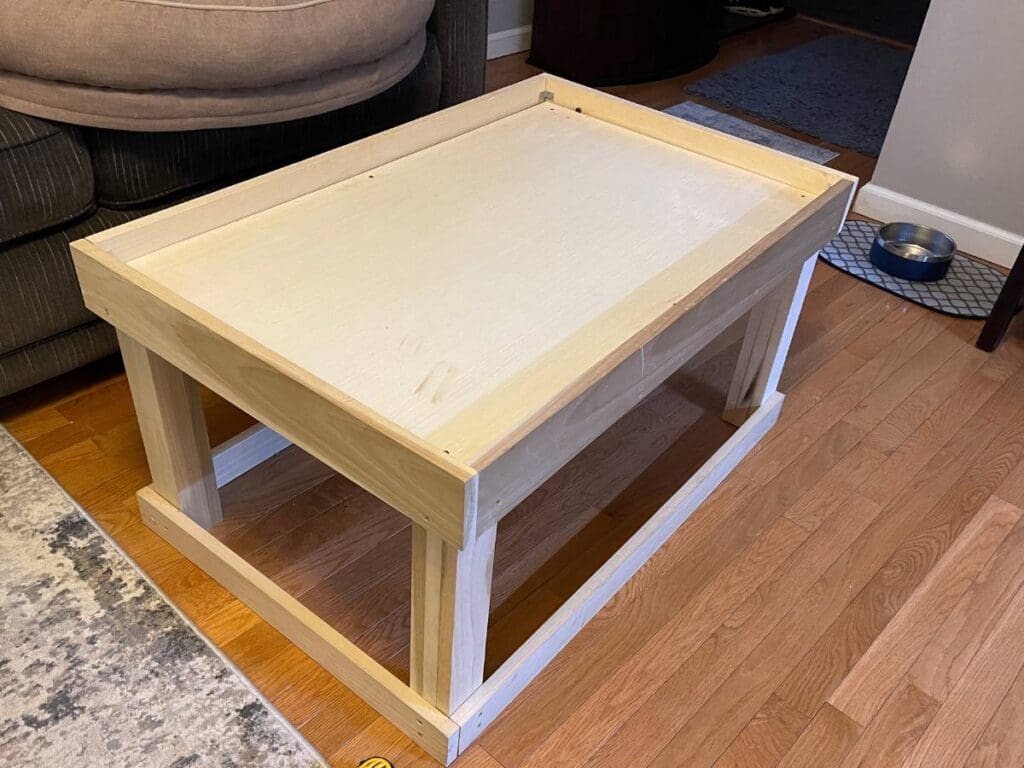
We recommend using the same piece of equipment as for our outside build-your-own obstacle. It’s a little unwieldy to move around but works perfectly.
Our pause table doubles as an elevated dog bed. We added a frame to ours to help hold it in place (and prevent them from sliding off). They love looking out the window from it!
Conclusion
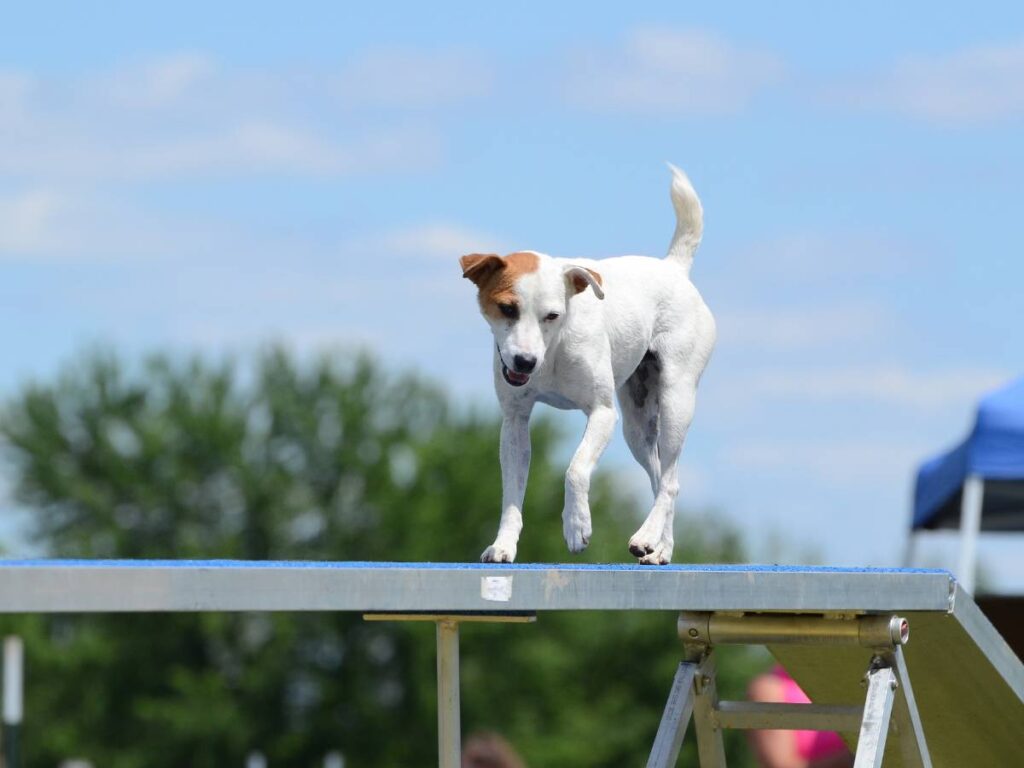
Creating obstacles and practicing agility work with your dogs can be affordable and rewarding for both you and your pup! We recommend trying the temporary methods first or rigging up another removable option, so you can determine whether you and your dog enjoy practicing agility. You can always transition to more permanent setups or build your own DIY dog agility platform later if you and your pup enjoy it!
We’d love to see your success with DIY dog agility platforms or other equipment! Share your photos of your dog trying out agility with us on Instagram by tagging @therulybully.
Have fun!



